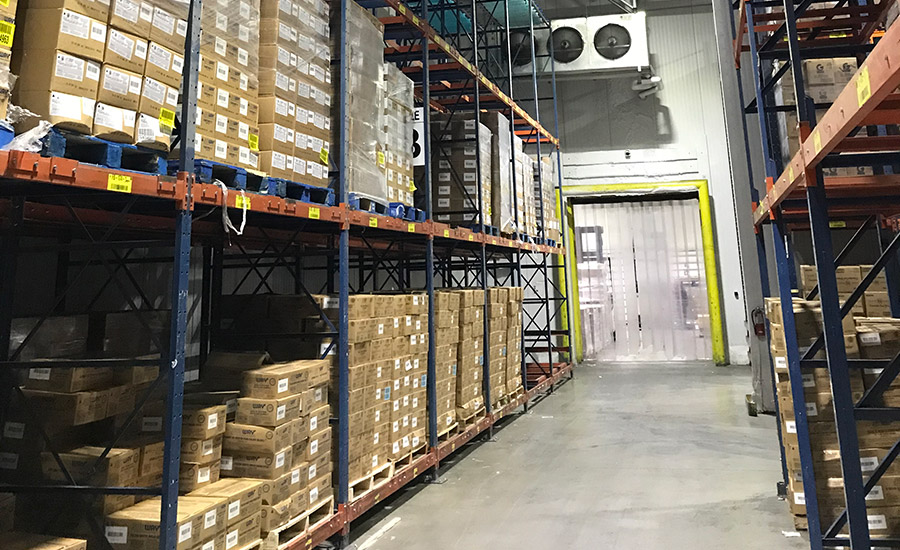In the not-so-distant past, when we thought of warehouses, we often conjured up images of dimly lit, cavernous spaces stacked with boxes and crates, where workers toiled manually to move goods from one place to another. However, the modern warehouse has evolved into a high-tech marvel, where cutting-edge industrial equipment plays a pivotal role in optimizing operations and enhancing efficiency. Discover the cutting-edge innovations powering warehouse operations in our exclusive behind-the-scenes look at the high-tech world of warehouse industrial equipment. Dive deeper into this exciting journey at https://www.ioscm.com/blog/streamlining-warehouse-operations-the-role-of-industrial-equipment-wholesalers/. In this article, we’ll take a peek behind the scenes to explore the fascinating world of warehouse industrial equipment.
Contents
Automated Guided Vehicles (AGVs): The Silent Workhorses
Imagine a fleet of robotic vehicles silently gliding through the warehouse, efficiently transporting goods from one end to another. These are Automated Guided Vehicles (AGVs), a cornerstone of modern warehousing technology. AGVs are equipped with sensors and navigation systems, allowing them to navigate complex warehouse environments autonomously. They’re capable of handling a wide range of tasks, from moving pallets to picking and sorting items, all with minimal human intervention.
Conveyor Systems: The Backbone of Material Flow
Conveyor systems are the unsung heroes of warehouse logistics. These intricate networks of belts, rollers, and motors ensure a seamless flow of goods from one station to another. Modern conveyors are equipped with advanced sensors and controls that enable them to adapt to changing conditions. They can even sort and divert items based on size, weight, or destination, making them a vital component of modern warehousing.
Robotics: Precision and Speed in Warehousing
Robots have revolutionized the world of warehousing by providing unparalleled precision and speed. Whether it’s robotic arms that pick and pack orders with dexterity or autonomous drones that conduct inventory checks from the sky, these mechanical marvels are becoming increasingly common in warehouses. They not only boost efficiency but also reduce the risk of human error.
Warehouse Management Systems (WMS): The Digital Brains
Behind the scenes, Warehouse Management Systems (WMS) act as the digital brains of modern warehouses. These software solutions coordinate all warehouse activities, from inventory management to order processing. They optimize inventory placement, prioritize order fulfillment, and provide real-time insights into warehouse performance. WMS solutions are instrumental in making data-driven decisions to improve efficiency and reduce costs.
IoT and Sensors: Visibility and Predictive Maintenance
The Internet of Things (IoT) has found its place in the warehouse, with sensors and smart devices providing unprecedented visibility into operations. Temperature sensors, humidity monitors, and RFID tags ensure that goods are stored under optimal conditions. Predictive maintenance algorithms analyze data from equipment sensors to preemptively identify and address maintenance needs, reducing downtime and increasing equipment lifespan.
Augmented Reality (AR): Enhancing Human Capabilities
Augmented Reality (AR) is changing the way warehouse workers interact with their environment. AR headsets overlay digital information on the real world, guiding workers to pick and pack items with remarkable speed and accuracy. AR also plays a crucial role in training, allowing new employees to learn the ropes more quickly.
Sustainability: Green Warehousing
Modern warehouses are increasingly focused on sustainability. High-tech equipment can play a significant role in reducing environmental impact. Energy-efficient lighting, smart HVAC systems, and eco-friendly packaging materials are just a few examples of how technology is helping warehouses become more eco-conscious.
Conclusion
The high-tech world of warehouse industrial equipment is a testament to human innovation and our relentless pursuit of efficiency and productivity. From AGVs and conveyor systems to robotics and IoT sensors, these technologies are transforming the way goods are handled, stored, and distributed. As we continue to embrace these advancements, the warehouse of the future will undoubtedly be a more efficient, sustainable, and interconnected hub in the global supply chain, enabling businesses to meet the demands of our rapidly evolving world.




